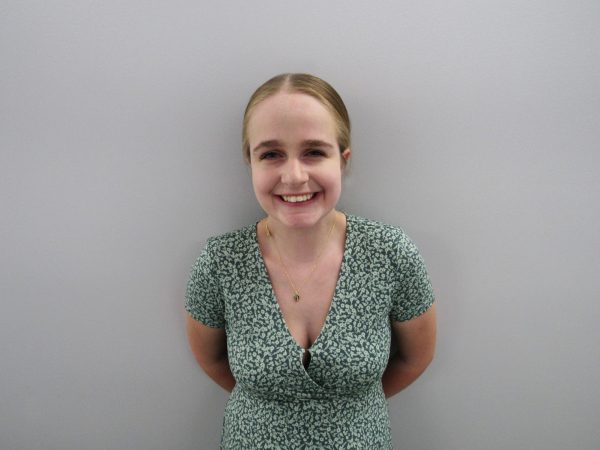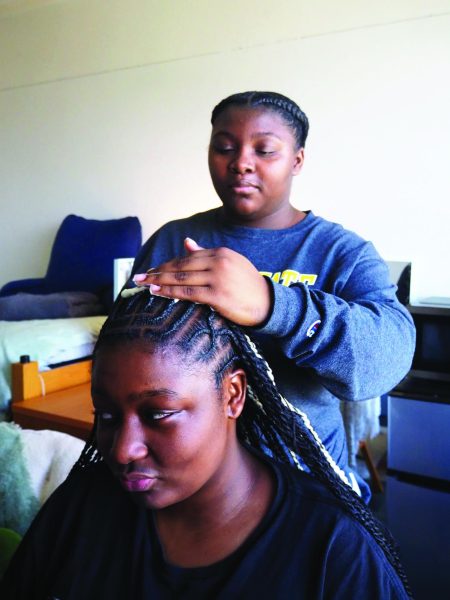Viewing Thanksgiving from a New Perspective
November 17, 2022
When we are younger, we are usually told that the first Thanksgiving was started by a group of Pilgrims, who wore buckles and big hats, alongside the Native Americans who lived in the area. However, historians are starting to tell a different story to readers of the 21st century.
“A Wampanoag leader named Massasoit first negotiated a treaty between Plymouth settlers and Wampanoag tribe in 1620, which included an agreement that no one from either group would harm the anyone from the other,” said an article that was published in “Good Housekeeping” titled “The True, Dark History of Thanksgiving” by Lizz Schumer.
With the treaty in mind, the Pilgrims and Massasoit traded English goods for access to basic necessities by the Wampanoag resources and other means of survival.
“Without help from the Wampanoag, the English would not have the successful harvest that led to the First Thanksgiving,” said an article, published by the National Museum of the American Indian, titled “Rethinking Celebrations: Native Perspectives on Thanksgiving.”
Nevertheless, after the chief passed on in 1661 and his son Wamsutta took his place, the rivalries between the colonists and the natives began to rise again.
During the years 1630 and 1642, about 25,000 European colonizers arrived in the new world and a plague swept through the Native American village which cut the Native population to half, the new chief passed away in 1662 while on a visit to the Pilgrims. After the death of Wamsutta, the next chief, Metacomet fueled the divide even more.
According to the same article in “Good Housekeeping,” in the year 1675, three Native Americans were executed for the death of a man who served as a translator between the tribes and the settlers. The execution of the three Native Americans led to numerous attacks in Connecticut and Massachusetts.
According to a document published by the Gilder Lehrman Institute of American History as a primary document titled “Thanksgiving Proclamation 1863,” President Abraham Lincoln established the first national Thanksgiving as a day of prayer and observance that came at the peak of the Civil War on the last Thursday of November.
When we first hear about the First Thanksgiving, there is a single character that makes his appearance as the friendly translator between the tribe and Englishmen. This character is Tisquantum or Squanto. Nonetheless, the real story of this famous man is more complex than we would like to remember.
The true story of Squanto starts with his tribe, the Patuxet Tribe who were members of the Wampanoag Confederacy, near Plymouth. In the beginning, his tribe had friendly relations with the settlers, but the friendly communication soon died out.
According to an article that was published on the site Allthatsinteresting.com and titled, “Squanto and the True Story of the First Thanksgiving,” Squanto was captured by English explorers who brought him to Spain and sold him into slavery. Squanto managed to escape slavery and fled to England where he learned the English language and was employed in Newfoundland.
In the same Allthatsinteresting.com article, it was in Newfoundland where he met Captain Thomas Dermer who was employed by the Englishman Fernando Gorges who employed Squanto as an interpreter. Now that he was back home, he found his entire tribe obliterated by the Europeans.
Now, this isn’t the same story that we hear while growing up in our lives. However, over the years it seems that we have normalized the various traditions and what is spoken of during the First Thanksgiving.
“The way we celebrate, we think of it as historical, but it really is not very historical,” WSC Professor of History Joseph Weixelman said. “We celebrate it as the way the 20th century would have celebrates it.”
The marvelous part about the long history of this holiday is the fact that each year Thanksgiving changes into something entirely different. During its origins, the celebration was for not starving in the New World, but it has taken its own form in the previous years to include various different traditions and ways to be thankful for another year.
So, I challenge every Wildcat to try to think of this holiday from a new perspective. I believe that this is better than just eating a delicious meal made up of some turkey and mashed potatoes.









